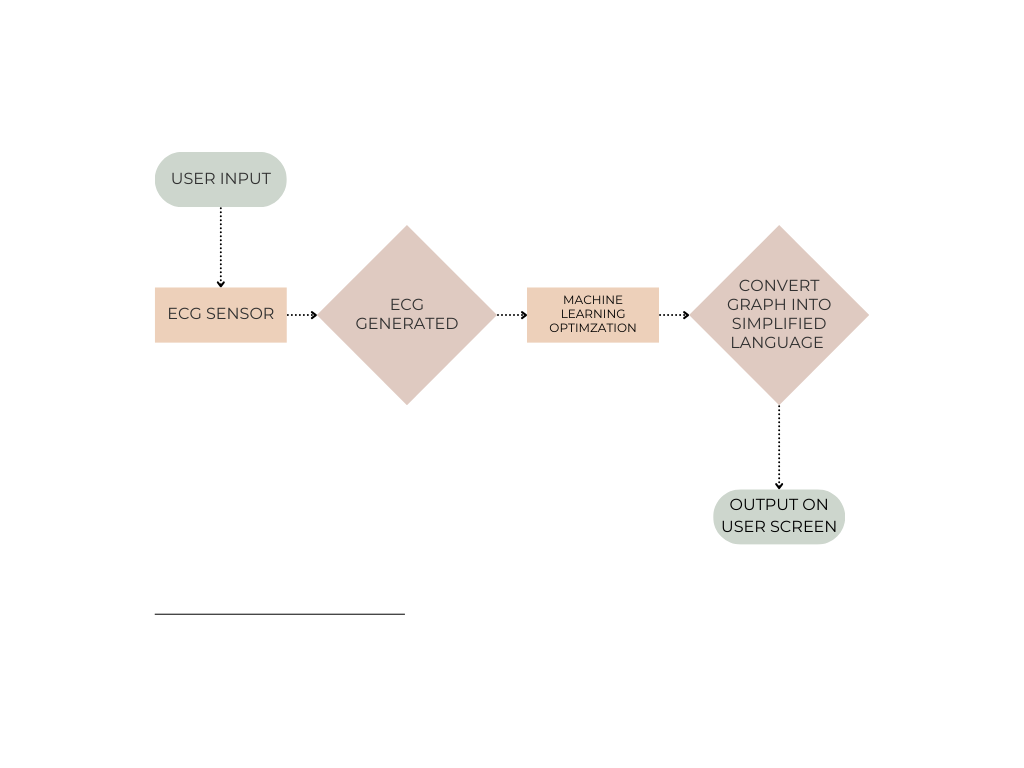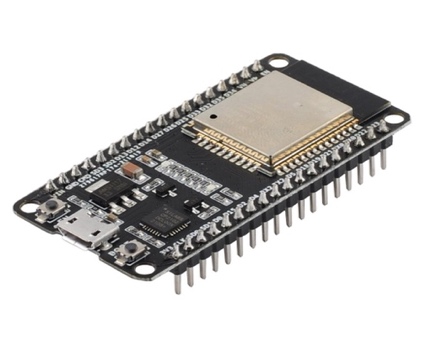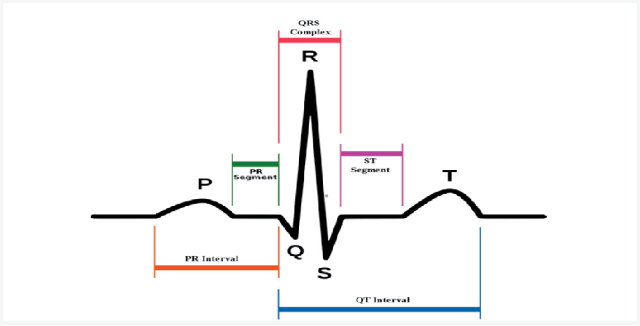Ijraset Journal For Research in Applied Science and Engineering Technology
- Home / Ijraset
- On This Page
- Abstract
- Introduction
- Conclusion
- References
- Copyright
Designing a Compact Portable Electro-Cardio Device Enhanced by Machine Learning for Early Detection of Myocardial Infraction
Authors: Aqsa Parveen, Imran Abbas, Muskan Singh
DOI Link: https://doi.org/10.22214/ijraset.2024.64921
Certificate: View Certificate
Abstract
Cardiovascular diseases remain one of the leading causes of death globally, underscoring the need for accessible, efficient, and accurate methods of heart health monitoring. Traditional heart monitoring tools, often confined to clinical settings, limit the ability to perform continuous, real-time assessments of heart function. This challenge has driven the demand for innovative, portable solutions that enable early detection and proactive management of heart conditions. The Heart Box project aims to revolutionize cardiac health monitoring through a portable, AI-integrated system that provides real-time analysis of electrocardiogram signals. Leveraging precision healthcare technology, this device enables early detection of heart conditions by continuous monitoring. Our ground breaking project encountered two primary challenges: establishing reliable hardware connections for data capture and sourcing appropriate datasets to train our Convolutional Neural Network model. Overcoming the intricacies of hardware integration demanded meticulous troubleshooting and innovative solutions to ensure seamless data acquisition. Additionally, identifying and curating high-quality datasets posed a significant hurdle, requiring exhaustive research and data pre-processing efforts. Despite these challenges, our perseverance and dedication led to the successful development of a robust Convolutional Neural Network model, revolutionizing cardiac assessment by leveraging cutting-edge technology and data-driven insights.
Introduction
I. INTRODUCTION
Cardiovascular diseases (CVDs) remain one of the leading causes of morbidity and mortality worldwide, accounting for approximately 31% of all global deaths according to the World Health Organization (WHO). The rising prevalence of lifestyle-related risk factors, such as obesity, sedentary behaviour, and unhealthy dietary habits, has exacerbated this public health crisis. As a result, there is an urgent need for innovative solutions that can facilitate early detection, continuous monitoring, and effective management of heart health. In this context, the Heart Box project emerges as a transformative initiative aimed at revolutionizing cardiac health monitoring by integrating advanced technology, particularly artificial intelligence (AI), into portable medical devices.
The Heart Box project proposes a novel approach to cardiac health monitoring by utilizing an AI-integrated system that provides real-time analysis of electrogram (ECG) signals. Trans- signal analysis ECG monitoring often requires patients to visit healthcare facilities, which can be inconvenient and resource-intensive for patients and healthcare providers. By contrast, the Heart Box device is designed to enable continuous tracking of vital signs and irregularities in heart function outside conventional clinical settings. This paradigm shift in cardiac monitoring not only enhances patient convenience but also ensures timely identification of potential issues, thereby facilitating early intervention and improving health outcomes. At the core of the Heart Box system lies an ECG sensor integrated with an ESP32 microcontroller, which serves as the device's processing unit. The incorporation of advanced machine learning (ML) algorithms allows the system to analyse ECG data with remarkable accuracy, providing non-invasive heart health assessments. This capability is particularly significant given that traditional ECG assessments often require cumbersome equipment and trained personnel, which can limit accessibility for many patients. By making advanced heart diagnostics portable and user-friendly, the Heart Box project aims to empower patients to take proactive control of their health, enabling them to monitor their cardiac status in real time and make informed decisions regarding their well-being. The significance of precision healthcare technology in the realm of cardiac care cannot be overstated. The integration of AI and machine learning into health monitoring systems has the potential to enhance diagnostic accuracy, reduce the incidence of misdiagnosis, and streamline clinical workflows. In the case of the Heart Box, the continuous monitoring capabilities provided by the device allow healthcare providers to track patients' cardiac health remotely.
This feature is especially beneficial for individuals with chronic heart conditions, as it enables providers to predict potential complications and intervene promptly, thereby mitigating the risk of adverse health events. Furthermore, the ability to monitor patients remotely alleviates the burden on healthcare infrastructure, which is often strained by high patient volumes and limited resources. Accessibility and affordability are critical factors in the successful implementation of any healthcare innovation, particularly in low-resource settings where the burden of CVDs is often most pronounced. The Heart Box project underscores the importance of making advanced cardiac diagnostics available to diverse populations, regardless of geographic or socioeconomic barriers. By providing a cost-effective solution for heart health monitoring, the Heart Box has the potential to democratize access to essential healthcare services, thereby contributing to the reduction of health disparities that plague many communities. This is particularly relevant in the context of global health initiatives aimed at improving cardiovascular health outcomes, as the Heart Box aligns with the goals of promoting equity and accessibility in healthcare delivery. Moreover, the Heart Box project resonates with the growing trend toward personalized medicine, which emphasizes the need for tailored healthcare solutions that account for individual patient characteristics and preferences. By enabling patients to engage actively in their health management, the Heart Box fosters a sense of ownership and responsibility for one's well-being. This shift from a reactive to a proactive approach in healthcare can lead to improved patient adherence to treatment regimens, better lifestyle choices, and ultimately, enhanced health outcomes. The implications of the Heart Box project extend beyond individual patient care; they also encompass broader public health considerations. As the global population ages and the prevalence of CVDs continues to rise, the demand for innovative solutions that can effectively monitor and manage heart health will only increase. The Heart Box project represents a timely response to this challenge, offering a scalable model that can be adapted to various healthcare contexts. By leveraging technology to enhance cardiac health monitoring, the project contributes to the ongoing efforts to reduce the burden of heart diseases on healthcare systems and improve population health. In summary, the Heart Box project stands at the intersection of technology, healthcare, and patient empowerment, aiming to transform the landscape of cardiac health monitoring. By integrating AI and machine learning into a portable device that facilitates real-time ECG analysis, the Heart Box addresses critical challenges in traditional cardiac care, including accessibility, affordability, and timely intervention. As the project unfolds, it holds the promise of not only improving individual health outcomes but also contributing to broader public health goals related to cardiovascular disease prevention and management. The potential impact of the Heart Box on the future of cardiac care underscores the importance of innovation in addressing the pressing health challenges of our time.
 Fig.1 Flow-chart
Fig.1 Flow-chart
II. METHODOLOGY
The Heart Box project aims to revolutionize cardiac health monitoring through a portable, AI-integrated system that provides real-time analysis of electrocardiogram (ECG) signals that were converted into human readable simplified language through machine learning. The overarching goal is to ensure that the Heart Box effectively enables early detection of heart conditions, facilitates remote monitoring, and empowers patients to take proactive control of their health. Further, machine learning classify this into categories (i.e Myocardial Infraction, History of MI, Normal, Abnormal).
 Fig.2 Architecture of Iot-Based Electro-Cardio Monitoring System
Fig.2 Architecture of Iot-Based Electro-Cardio Monitoring System
III. HARDWARE COMPONENTS AND SENSOR INTEGRATION
A. AD8232 ECG Sensor
Electrocardiography or ECG is a technique for gathering electrical signals which are generated from the human heart. When someone experiences physiological arousal then the ECG sensor allows us to recognize the level, however, it is also used for understanding the psychological state of humans. So, an AD8232 sensor is used to calculate the heart's electrical activity. This is a small chip and the electrical action of this can be charted like an ECG (Electrocardiogram). Electrocardiography can be used to help in diagnosing different conditions of the heart. The AD8232 ECG sensor is a commercial board used to calculate the electrical movement of the human heart. This action can be charted like an Electrocardiogram; this output is an analog reading. Electrocardiograms can be very noisy, so the AD8232 chip can be used to reduce the noise. The working principle of the ECG sensor is like an operational amplifier to help in getting a clear signal from the intervals simply. The AD8232 sensor is used for signal conditioning in ECG as well as other measurement applications of biopotential. The main purpose of this chip is to amplify, extract as well as filter biopotential signals which are small in noisy conditions like those formed through the replacement of remote electrodes as well as motion. The heart rate monitoring sensor like AD8232 includes pins like SDN pin, LO+ pin, LO- pin, OUTPUT pin, 3.3V pin, and GND pin. So that we can connect this IC to development boards like Arduino by soldering pins. Additionally, this board includes pins like the right arm (RA), left arm (LA) & right leg (RL) pins to connect custom sensors. An LED indicator in this board is used to indicate the heartbeat rhythm of humans. The AD8232 sensor comprises a function like quick restore, used to decrease the length of long resolving tails of the HPFs. This sensor is accessible in a 4 mm × 4 mm size, and the package of this sensor is 20-lead LFCSP . It operates from −40°C -to +85°C but the performance is specified from 0°C -to 70°C.

Fig.3 Hardware Sensor AD8232
B. ESP32 Micro-controller
The ESP32 is a versatile, low-cost microcontroller with integrated Wi-Fi and Bluetooth capabilities, making it ideal for IoT and embedded systems. It features dual-core processors, supports various I/O interfaces (GPIO, PWM, ADC, I2C, SPI, UART), and operates at up to 240 MHz with 520 KB SRAM, up to 16 MB flash, and low power modes, it's suitable for energy-efficient applications. Additionally, it includes robust security features like AES encryption and secure boot. The ESP32 is supported by popular development platforms like Arduino IDE and Micro Python, making it perfect for smart devices and wireless applications.

Fig.4 Hardware Micro-controller ESP32
IV. MACHINE LEARNING MODEL INTEGRATION
???????A. Model Overview
The Model analyses electrocardiogram(ECG) signal by electrodes are placed on the skin . By processing these signals, the model can extract the critical features like rhythm patterns that capture ECG data, cleans and processes it and use machine learning to detect the heart abnormalities and predict risks.
1) Data Acquisition from Sensors
The electrocardiogram (ECG) sensor collects data through 3 patches shown in the figure. Adhesive electrodes placed on specific areas of the skin detect minute electrical potentials generated by cardiac muscle activity. These low-amplitude signals are amplified, filtered to remove noise, and converted from analog to digital format. Sophisticated algorithms then process the digital data to extract information about cardiac rate, rhythm, and other parameters. The processed information is continuously transmitted to the Heart Box system for real-time monitoring and analysis, providing an uninterrupted stream of cardiac data for immediate detection and interpretation Patches Placement: Before applying to the body, it is advised to snap the sensor pads onto the leads. The pads provide better measurements the closer they are to the heart. To assist in determining the correct placement, the cables are color-coded.
Red: RA (Right ARM) Yellow: LA (Left ARM) Green: RL (Right Leg) as shown in Fig. 5.

Fig.5 Patches Placement
2) Data Pre-processing
Once the ECG data is captured in the Heart Box system, it undergoes pre-processing to ensure accuracy and reliability before being used in the machine learning model. The raw ECG signal is first filtered using a band-pass filter to reduce noise and remove unwanted frequencies caused by body movement or external interference. Key features such as Heart Rate Variability (HRV) and the QRS complex are then extracted, as they are crucial for identifying irregularities in heart rhythm. To enhance model performance, the extracted features are normalized, ensuring consistent scaling across all inputs. These pre-processing steps help deliver high-quality data for precise anomaly detection by the model.
3) Data Transmission and Storage
Following pre-processing, the Heart Box gadget uses Wi-Fi connectivity via the ESP32 microcontroller to send the extracted ECG data to a secure cloud-based server. This makes it possible to monitor and analyse data in real-time. Healthcare providers or users can receive timely information because the transmission is tuned to guarantee the least amount of latency. After transmission, the information is safely kept in a cloud database for later review and analysis. The storage solution complies with applicable health data protection regulations while guaranteeing data integrity and confidentiality. To track the user's heart health over time, trend analysis or comparison studies can also be conducted using the previous data.
???????B. Data Input to Machine Learning Model
The pre-processed features, like Heart Rate Variability (HRV) and the QRS complex, are incorporated into the machine learning model once the ECG data has been delivered and stored. These essential characteristics are analysed by the algorithm to forecast possible cardiac anomalies. Depending on the configuration of the system and the urgency of the analysis, this input is done either in batch mode or in real-time. These input features are used by the machine learning model to categorize heart health patterns and identify any departures from typical cardiac function. The model's output is then utilized to set up alarms for anomalous readings, which serves as a precursor to possible cardiac problems. High-quality, pre-processed data is continuously added to the system, improving its accuracy and responsiveness.
???????C. Model Prediction and Output
After obtaining the pre-processed ECG data, the machine learning model analyses the input and produces predictions about the user's heart health. By analysing important parameters such as Heart Rate Variability (HRV) and the QRS complex, the model is taught to recognize anomalies such as irregular heartbeats, arrhythmias, or other possible cardiovascular disorders. The model categorizes the heart activity as either normal or pathological based on the analysis. When an anomaly is found, the system sends out an alarm that can be acted upon by the user or medical specialists. The output can be transferred to a web dashboard or mobile application connected for real-time monitoring and review in addition to being shown on the Heart Box user interface. This guarantees that the user gets feedback on time and can take appropriate measures if any heart irregularities are identified.
 ???????
???????
Fig.6 ECG waves and Intervals
???????D. Results
A 3-lead placement is adequate to analyse the primary features of the ECG signal compared to conventional 12-lead ECG monitoring devices used in hospitals. To best sample the ECG signal, the electrodes need to be placed around the heart and form a triangle and then signals were generated by our sensors that were sent to the machine learning model that classify that into four categories that is, myocardial infraction, normal, abnormal and history of myocardial infraction the accuracy of that model will be approx. 91% with 25 epoch and it will further increased with the update in the datasets.
Conclusion
New opportunities for innovation and advancement have been created by the IoT\'s and AI integration with healthcare. By studying global health trends and processing real-time data, this convergence not only improves healthcare services but also makes it possible to uncover new preventive measures. Hospital automation powered by AI and IoT may transform treatment methods in the future, enabling medical professionals to identify and comprehend illnesses more effectively. However, since these technologies are related to human health, caution and security must come first. Ultimately, this advancement may result in more accessible healthcare through lower nursing costs and more reasonably priced medical procedures. We can accomplish the aim of safe, economical, and effective illness prevention and treatment by making sure that technology and health advance in tandem.
References
[1] S. N. Patil, S. S. Jagdale, A. T. Gharal, and R. B. Tapase, \"Wireless ECG Monitoring System,\" International Research Journal of Engineering and Technology (IRJET), vol. 3, no. 3, pp. 915, Mar. 2016.https://www.academia.edu/76523765/Wireless_ECG_monitoring_system?email_work_card=thumbnail [2] P. K. Saha and A. Singh, \"IoT Based Smart ECG Monitoring System,\" International Journal for Research in Applied Science & Engineering Technology (IJRASET), vol. 11, no. 2, pp. 1483, Feb. 2023. https://www.ijraset.com [3] M. L. Sahu, M. Atulkar, M. K. Ahirwal, and A. Ahamad, \"IoT-enabled cloud-based real-time remote ECG monitoring system,\" Journal of Medical Engineering & Technology, published online May 21, 2021. https://doi.org/10.1080/03091902.2021.1921870 [4] S. M. Qaisar and A. Subasi, \"Cloud-based ECG monitoring using event-driven ECG acquisition and machine learning techniques,\" Physical and Engineering Sciences in Medicine, vol. 43, no. 3, pp. 817–828, Sep. 2020. doi:https://doi.org/10.1007/s13246-020-00863-6 [5] M. O. Rahman, M. A. Kashem, A.-A. Nayan, M. F. Akter, F. Rabbi, M. Ahmed, and M. Asaduzzaman, \"Internet of Things (IoT) based ECG System for Rural Health Care,\" International Journal of Advanced Computer Science and Applications (IJACSA), vol. 12, no. 6, pp. 638–645, 2021. doi:https://doi.org/10.14569/IJACSA.2021.0120674 [6] M. O. Rahman, F. M. J. M. Shamrat, M. A. Kashem, M. F. Akter, S. Chakraborty, M. Ahmed, and S. Mustary, \"Internet of Things based electrocardiogram monitoring system using machine learning algorithm,\" International Journal of Electrical and Computer Engineering (IJECE), vol. 12, no. 4, pp. 3739–3751, Aug. 2022. doi: 10.11591/ijece.v12i4.pp3739-3751
Copyright
Copyright © 2024 Aqsa Parveen, Imran Abbas, Muskan Singh. This is an open access article distributed under the Creative Commons Attribution License, which permits unrestricted use, distribution, and reproduction in any medium, provided the original work is properly cited.

Download Paper
Paper Id : IJRASET64921
Publish Date : 2024-10-31
ISSN : 2321-9653
Publisher Name : IJRASET
DOI Link : Click Here
 Submit Paper Online
Submit Paper Online

